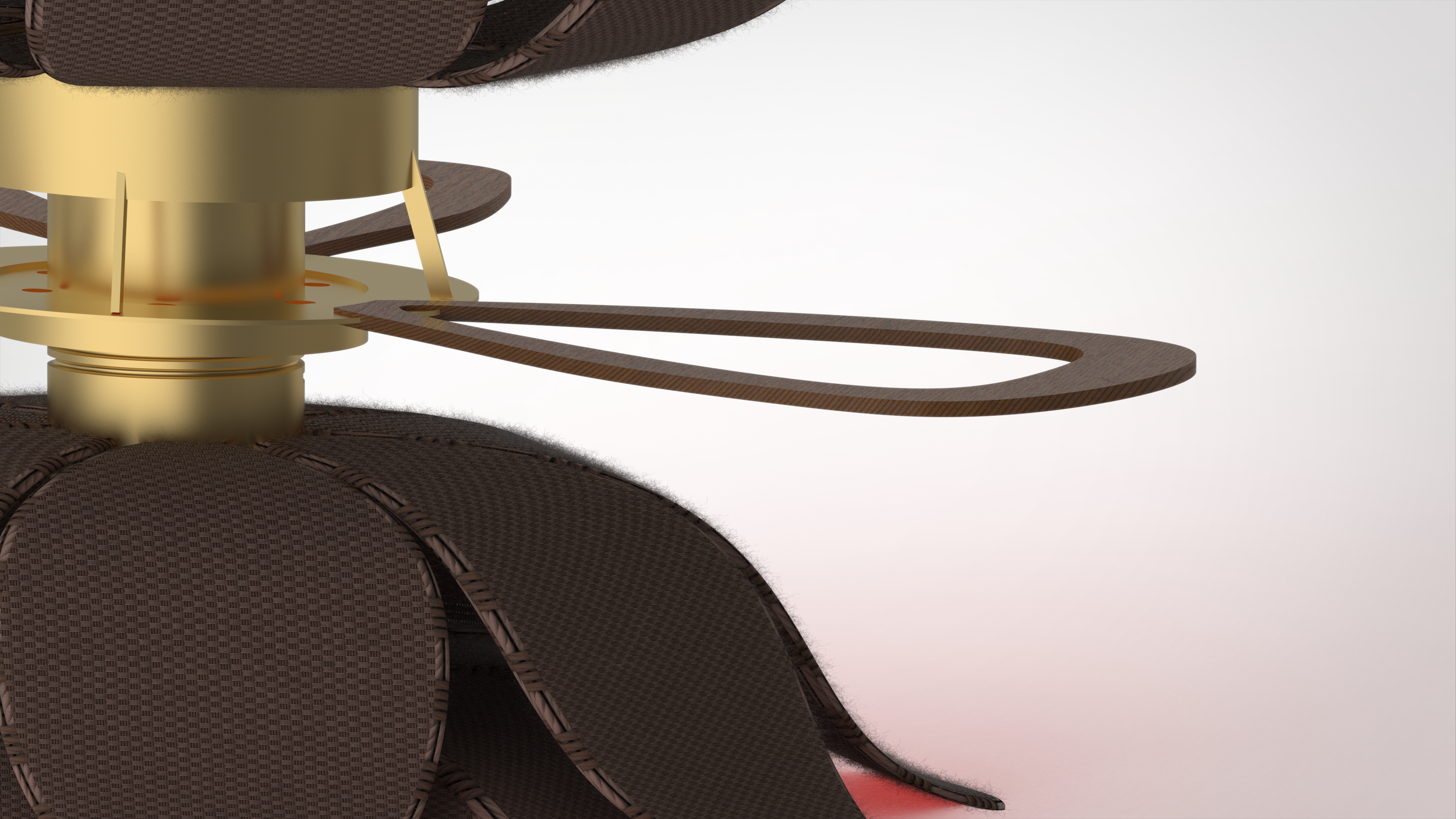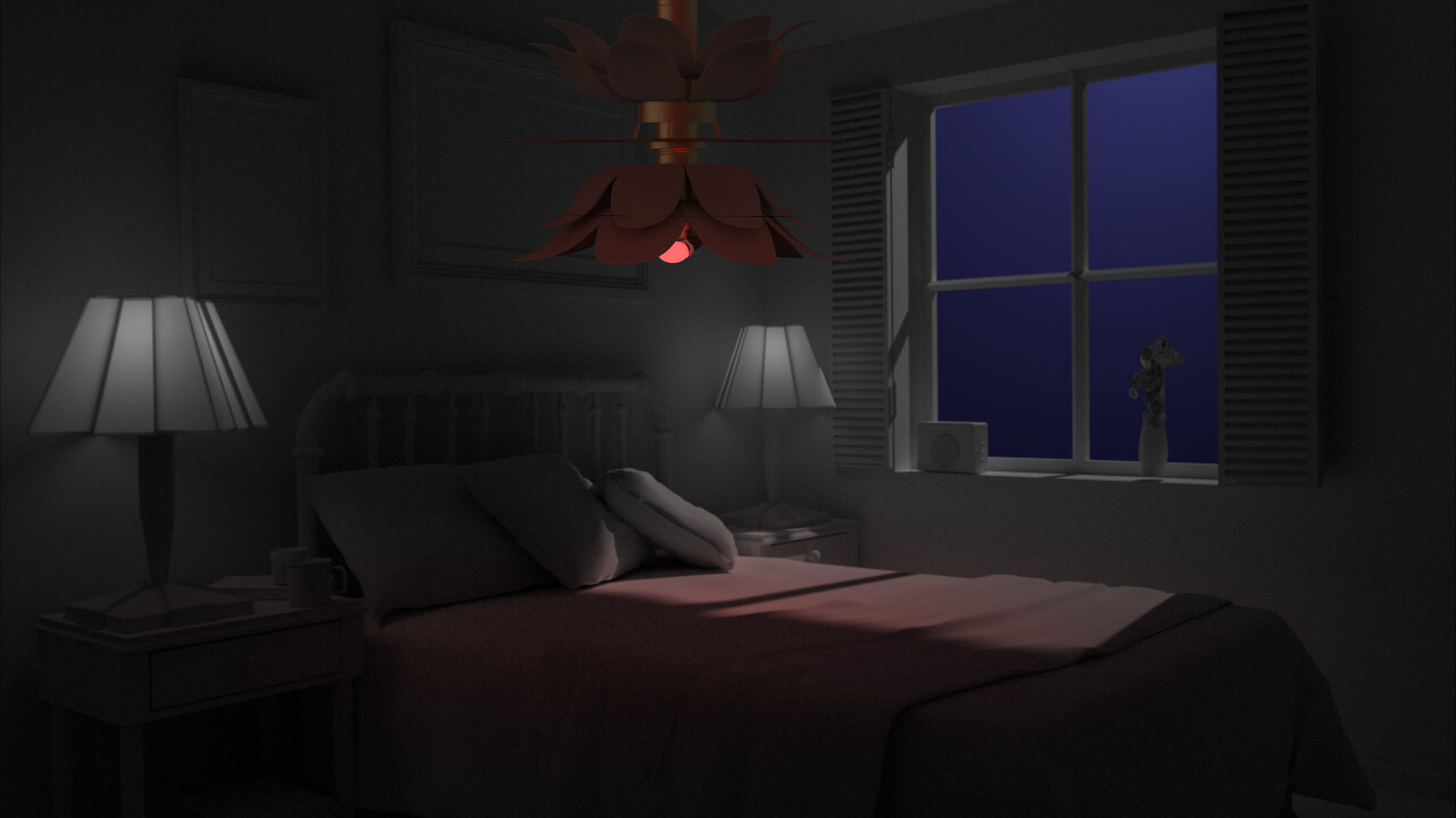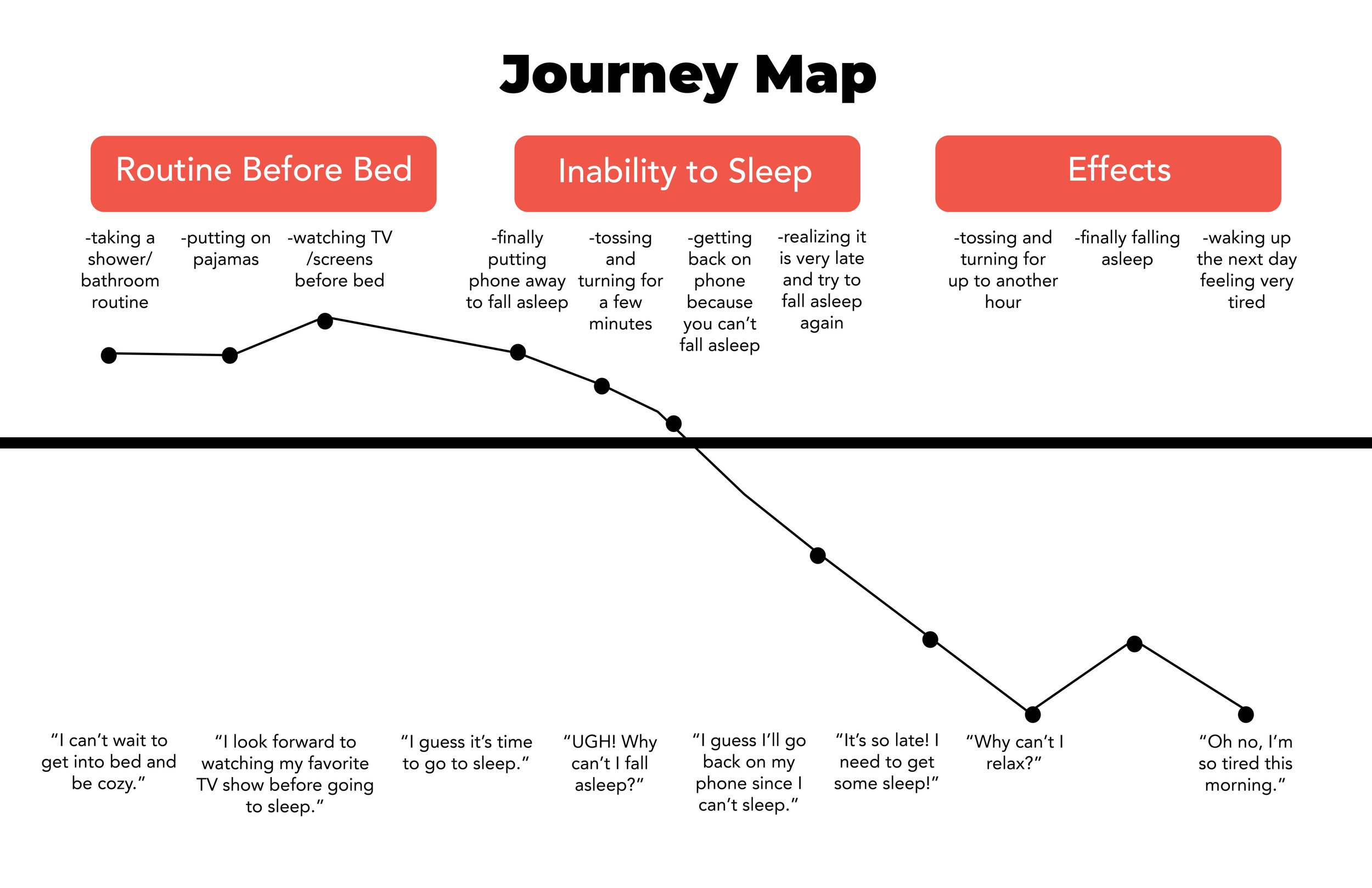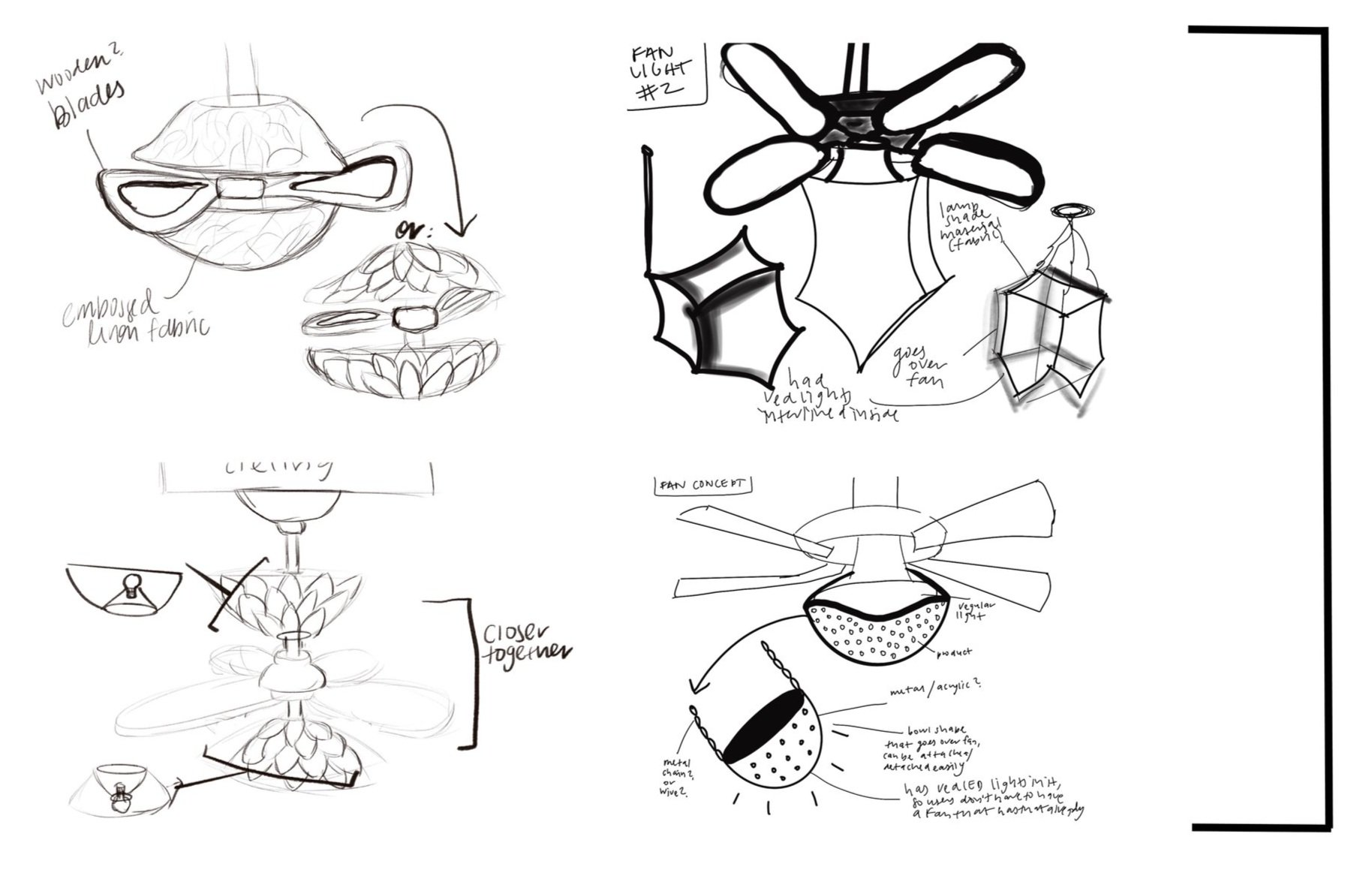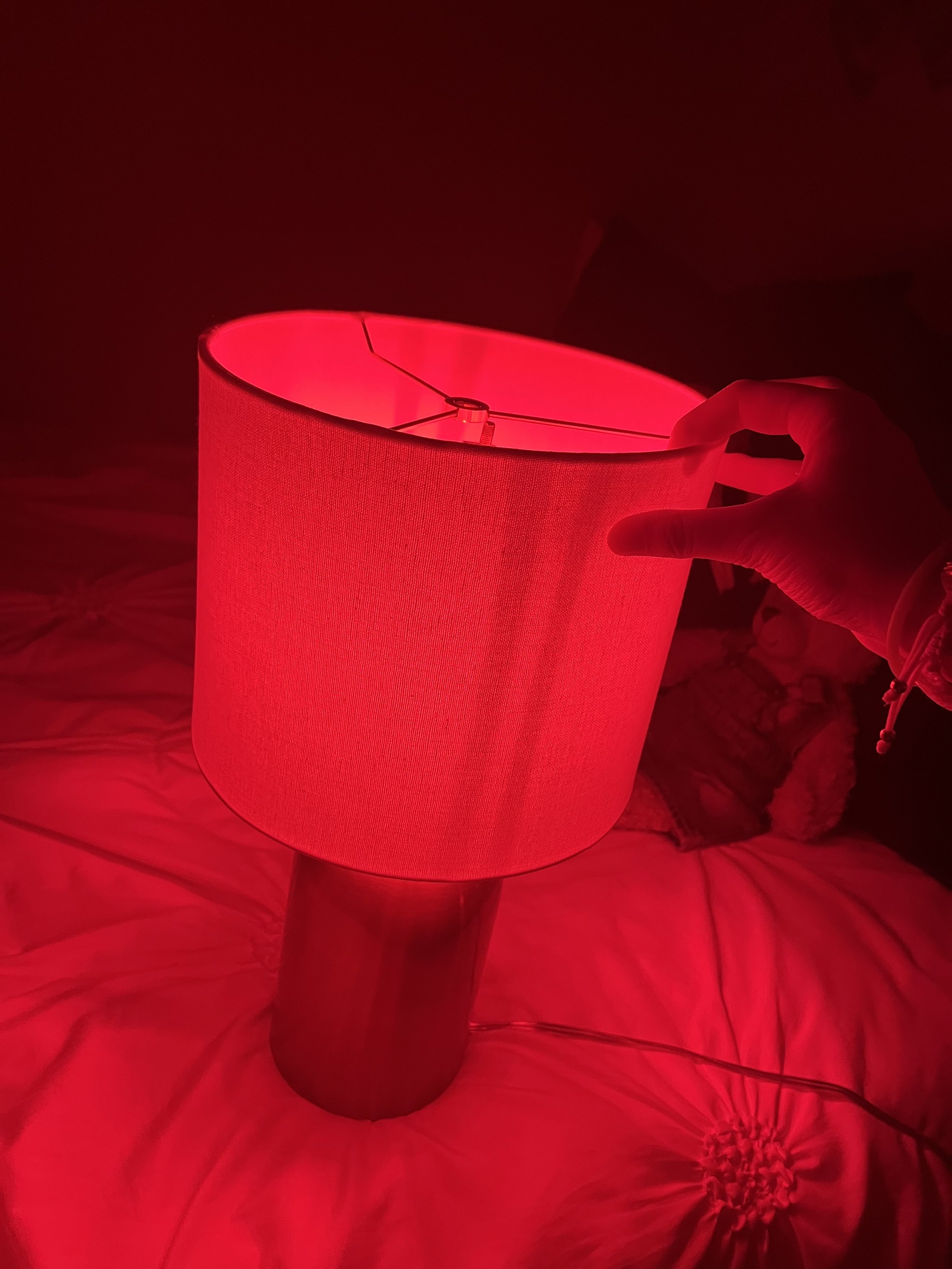FAN-DA-LIER
FAN-DA-LIER
Thus, the Fan-Da-Lier is a combined light fixture of a fan and a chandelier (hence the name) designed to promote a good night of sleep. The purpose of this product is to help reverse the negative effects blue light has on a user’s eyes, specifically in its ability of producing melatonin and the act of falling asleep. The light is designed for anyone who suffers from poor sleeping habits, but is specifically geared towards teenagers and young adults who are exposed to blue light the most.
Sleep is a substantial part in anybody’s life, yet there is still a vast amount of individuals who suffer from chronic sleep problems daily. To help solve this problem, The Fan-Da-Lier uses colored red LED light to help produce more melatonin for users most exposed to harmful lights, like teenagers, overall making sleep easier to achieve.
Primary Research
For this project, we were asked to solve a problem through a lighting design form. This led me to create my original problem statement:
Problem Statement: Sleep is a substantial part in anybody’s life, yet there is still a vast amount of individuals who suffer from chronic sleep problems daily. Many factors contribute to this, but one of the significant causes is the amount of time exposed to blue light, a light that found in most electronics that disrupts the body’s sleep patterns through the light’s high energy. To address this problem, I want to explore how a chandelier light fixture that uses colored red LED light helps specifically the users most exposed to blue light, like teenagers, produce more melatonin in their body making sleep not as stressful to come to and overall, easier to achieve.
Journey Map:
To fully understand the painpoints of the process of going to sleep, I decided to create a journey map based on the average steps a typical teenager takes to fall asleep. I divided the journey into three different steps: “Routine Before Bed”, “Inability to Sleep”, and “Effects”. From this, I found that the lowest points a user experiences throughout the entire process is found within the effects of not getting an adequate amount of sleep. Thus, I found that those were points I wanted to focus on within my product and design.
Sleep Survey:
To fully analyze and understand how teenagers fall asleep, I created a short survey that asked about their sleep schedule and the certain activities that they might do before bed that might harm/help their ability to fall asleep. I sent the poll out to different individuals aged from 14-20, and around 50 of them responded:
Insights from Research
The most common activity to do before a user goes to sleep is to scroll through their phone. This can be due to the amount of time teenagers spend on social media, so they have to make sure everything online is checked before they can go to sleep.
The last thing teenagers do before going to sleep is scroll through their phone, which shows how much blue light they consume and how it has an effect on a user’s sleep cycle.
Users who don’t get 8 and more hours of sleep each night on average, tend to not have as many difficulties falling asleep, because it doesn’t take them no more than twenty minutes to fall asleep.
Users who take 30 minutes-1 hour to fall asleep experience this struggle up to five times a week. All of these users said they use their phone as their last activity to do before they go to bed. This shows how blue light is altering their melatonin levels and affecting their ability to fall asleep.
Ideation
For my first ideation sketches, I was focusing on an overhead chandelier that had characteristics of an artistic element. I wanted the design to be decorative, as well as functional as the targeted user usually tends to care about the interior design of their room, as it is their own individual safe space. However, within my first critique, it was pointed out how popular it is to have fans in a bedroom, as many users use fans when they go to sleep. This allowed the concept of a fan to not only act as a cooling method, but as a decorative room ornament and as a sleep aid. So, in my next sketches, I take this into consideration.
Within these sketches, I incoporated the fan within the design. However, I was using the typical standard design of the fan blades within the concepts. In order for my design to be truly unique, I had to redesign how a fan blade would work to be better fit within my overall design.
Thus, I also explored the petal design within form of the fan blades. I almost wanted to sandwhich the different petals within the blades to make it more of a consistent concept. However, a major struggle was the overall form of the blades for the fan.
Exploration of Material
Before creating ideation sketches, I wanted to research and explore what kind of material would be best suited for my design:
Acrylic
Acrylic is modern, precise, lightweight, and highly pliable. Acrylic comes in any shape, any size and any color. Quality acrylic offers a high modern look that appeals to many people, which is ideal for any design situation.
Fabric
Fabric adds texture along with light diffusion and shadow play for a look that is more sophisticated. Because different fabrics offer such a diverse range of colors and patterns, there is a lot of different styles from fabric shades and accents.
Metal
Metal is a popular choice for light fixtures because of its strength-to-weight ratio and it can hold its form for years to come. Metal can be textured or smooth, natural or finished in a vibrant color, which makes it especially versatile.
Final Form

